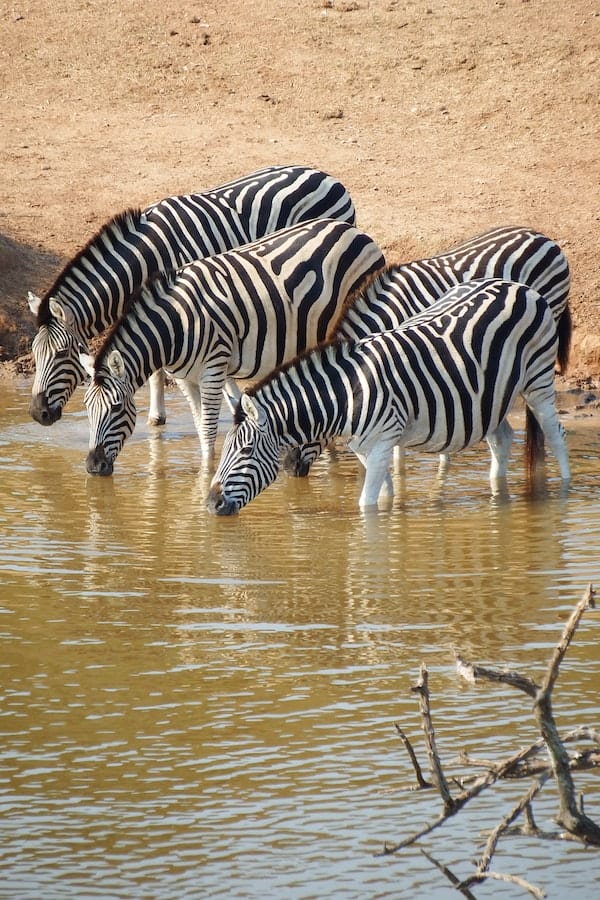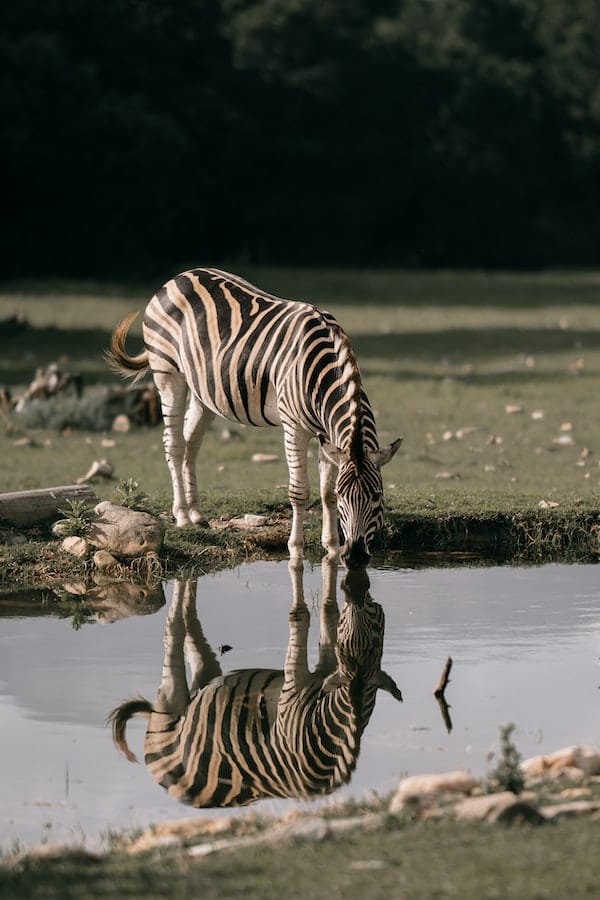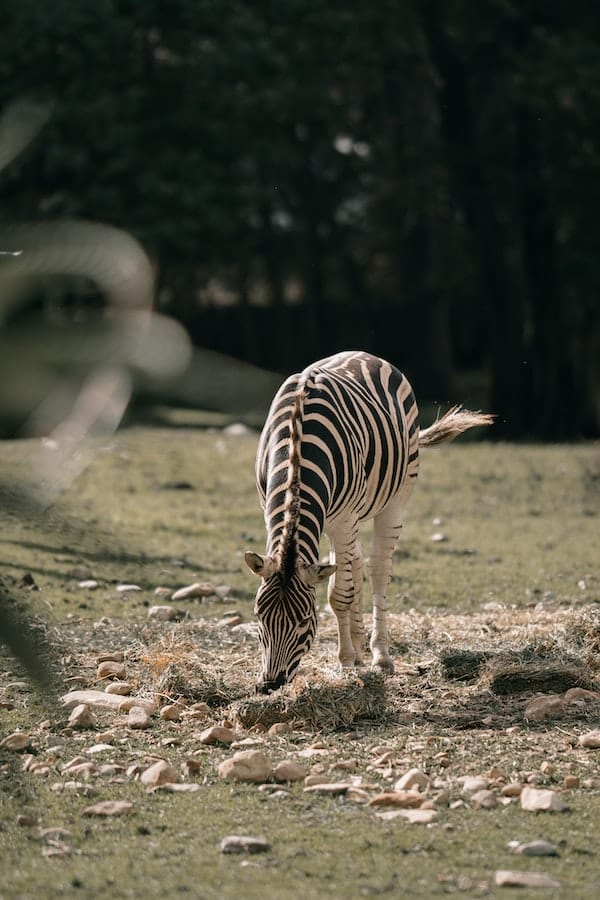
Zebras are iconic African animals for their distinctive black and white striped coats.
Native to the grassy plains of Africa, these equines have long been a subject of curiosity among people worldwide.
While zebras may look like horses with stripes, there is much more to them than meets the eye.
Here are some interesting facts about these unique animals.
Fact #1: Zebras have excellent eyesight and hearing.
Zebras have excellent vision and hearing, enabling them to judge distances accurately and detect potential danger.
Their eyesight is so sharp that they can even spot an approaching predator over a mile away!
They also possess excellent hearing, allowing them to detect the sound of predators or other zebras from quite a distance.
This heightened sense of awareness helps them to stay safe in the wild.
Fact #2: Zebras have unique stripes.
No two zebras have the same pattern of stripes, making each animal unique!
The black and white striped pattern on their coats acts as a form of camouflage in the tall grass, making it difficult for predators to spot them.
In addition, the stripes may be used as a means of communication between zebras.
Each stripe pattern is thought to act like a “barcode” that helps one zebra identify another within their herd.
Fact #3: Zebras are social creatures.

Zebras are highly social animals and live in large, tightly-knit herds of up to several hundred individuals.
These herds provide a great deal of protection from predators as the group can take advantage of their heightened senses, such as eyesight and hearing, as well as their sheer numbers to ward off potential danger.
They are also highly interactive with one another and enjoy grooming each other, playing together, and running alongside each other.
Fact #4: Zebras have strong family bonds.
In addition to the social bond shared between herd members, zebras also have strong family bonds.
Each zebra has an individual bond with its mother and siblings that lasts throughout their lives.
Even after maturing, zebras take part in playful interactions with one another, such as racing and chasing each other around the plains.
This strong connection between family members helps to ensure their safety and survival in the wild.
Fact #5: Zebras are facing threats from human activities.
Unfortunately, zebras are threatened by increasing human activity throughout their range.
They face habitat destruction from expanding agricultural land, poaching for their skins and meat, and competition with livestock for resources.
As a result, their populations have been declining throughout Africa in recent years.
Conservation efforts are underway to help protect these magnificent animals and ensure they remain part of the African landscape for generations.
Fact #6: Zebras have a unique form of communication.
In addition to their distinctive stripes, zebras also possess an impressive array of vocalizations and postures that allow them to communicate with one another.
For example, they use loud barks and whinnies to communicate over long distances and make other noises, such as snorts, grunts, and squeals, to express emotions or warn of danger.
They also use body language, such as head-bobbing or facial expressions, to convey complex messages without speaking a single word!
- Related post: 200+ Best Zebra Names
- Related post: Top 50 Best Zebra Tattoo Designs
Fact #7: Zebras are powerful animals.

Despite their relatively small size, zebras are surprisingly powerful animals!
They can reach speeds up to 40 miles per hour and have been known to kick predators with enough force to kill or seriously injure them.
Their strength also allows them to pull heavy loads, such as plows or carts, for long distances.
This makes zebras a valuable asset to African farmers and other local communities in need of their hardworking nature.
Fact #8: Zebras play an important role in their ecosystem.
As grazers, zebras play an important role in maintaining the balance of their environment.
Chomping on grass and other vegetation helps keep the landscape lush and diverse.
They also disperse seeds through their droppings, helping to spread new plants across the savanna.
As part of the larger food web, zebras are also an important food source for their predators, such as lions and hyenas.
Without them, the African savanna ecosystem would be in peril.
Fact #9: Zebras have a remarkable lifespan.
In the wild, zebras can live up to 25 years, with some individuals reaching even older ages.
This is partly due to their hardy nature and the protection they receive from the herd.
Historically, this longevity greatly benefited African societies since it allowed the animals to serve as long-term investments for those who kept them.
Fact #10: Zebras are a symbol of African culture and pride.
The zebra is an iconic symbol of African heritage and plays an important role in many different cultures throughout the continent.
In some societies, they are seen as symbols of strength, while in others, they are associated with beauty and grace.
The zebra’s graceful movements and unique striped pattern also appear in traditional art, music, and folklore.
For many Africans, a zebra is an object of pride that brings them closer to their cultural heritage.
Fact #11: Zebras are a part of African folklore and mythology.

In many parts of Africa, zebras have long been an important part of local folklore and mythology.
They are often seen as symbols of wisdom and strength, with stories being told of their brave deeds and miraculous powers.
Zebras are also closely linked to African spiritual beliefs, with many traditional cultures believing that animals have a special connection between humans and the spirit world.
By recognizing and respecting this link, African communities can help protect these magnificent animals for generations.
Fact #12: Zebras are an important part of conservation efforts.
As their numbers continue to decline due to habitat destruction and overhunting, the zebra is becoming increasingly endangered in many parts of Africa.
This has led to several conservation initiatives to protect the species, such as habitat protection and animal rehabilitation programs.
By recognizing the essential role zebras play in their ecosystem, conservationists are working to ensure that these animals remain part of their natural environment for many years.
Overall, the zebra is a wonderful animal that plays an incredibly important role in African culture and ecology.
With its unique striped pattern, hardworking nature, and remarkable lifespan, it’s no wonder why this majestic creature has been revered by many different societies for centuries.
By understanding more about their biology, behavior, and cultural importance, we can help ensure a brighter future for these important animals.


GIPHY App Key not set. Please check settings